I had long been fascinated by Japanese scrolls in museums and galleries and dreamed of learning calligraphy in Japan, where the art form has been practiced and cherished for over 1,500 years since its adoption from China. But how could I do that without any introductions, without knowing Japanese, and without knowing anyone in Japan? Still, when my children finished college, I told them it was time for me to pursue my dream.
At the age of 59, I sold my car, sublet my apartment, and moved to Japan.
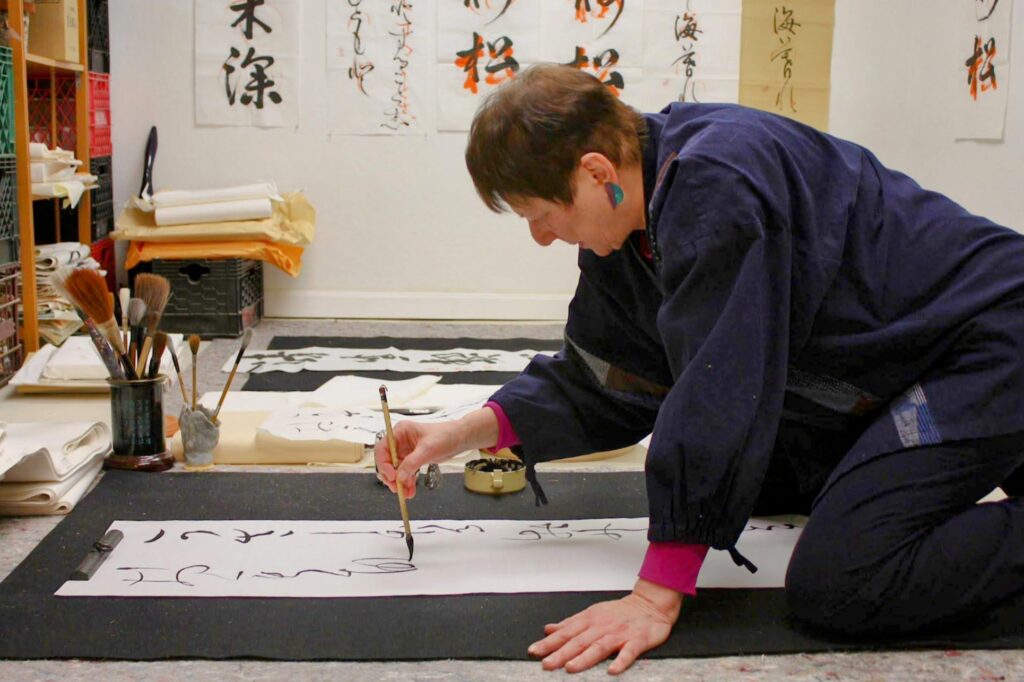
In search of a teacher, I found much more
I applied for a one-year job teaching English and was enchanted from the moment I arrived in Japan. That year, while living in Takasaki in Gunma Prefecture, I asked all of my adult students if they knew of a sensei who could teach me calligraphy. I knew some of their young children were taking lessons, and I humbly begged for an introduction. With only four months left on my work visa, I finally succeeded. I couldn’t speak Japanese, and my teacher didn’t speak English, but I learned by watching her. With smiles and patience, we formed a connection that continues to this day.
Alongside my calligraphy lessons, I studied Japanese with a group of women ranging in age from 30 to 89. One had studied with sensei for 25 years; others had also been with her for a long time. Everyone was gracious, even though my Japanese was minimal.
Shared laughter at “tea taimu”: Where learning led to belonging
At the end of each class, we would have “tea taimu” (the way “tea time” is endearingly pronounced in Japan).
Everyone brought something to share, including fermented cabbage, bakery sweets, various kinds of osenbei (rice crackers), and fruit, which is considered something of a luxury in Japan. I always had trouble reading the packaging instructions for opening the crackers, and my teacher would kindly assist me. One day, she brought in bunches of grapes from her own yard. They were larger than I was used to. I popped one into my mouth as I normally would, but judging by the looks on my fellow classmates’ faces, I had made a small cultural misstep. Sensei gently took one of the grapes and peeled it. We all laughed.
The art of repetition, stroke by stroke
I worked very hard on assignments each week. Students were at different levels, and their assignments reflected that. Mine were at the beginning stages. I worked in three styles at first: kaisho, the block-like characters; gyosho, which is like cursive in English; and sosho, the most freeform and abstract style, which is very difficult to learn how to read. My favorite was, and still is, gyosho.
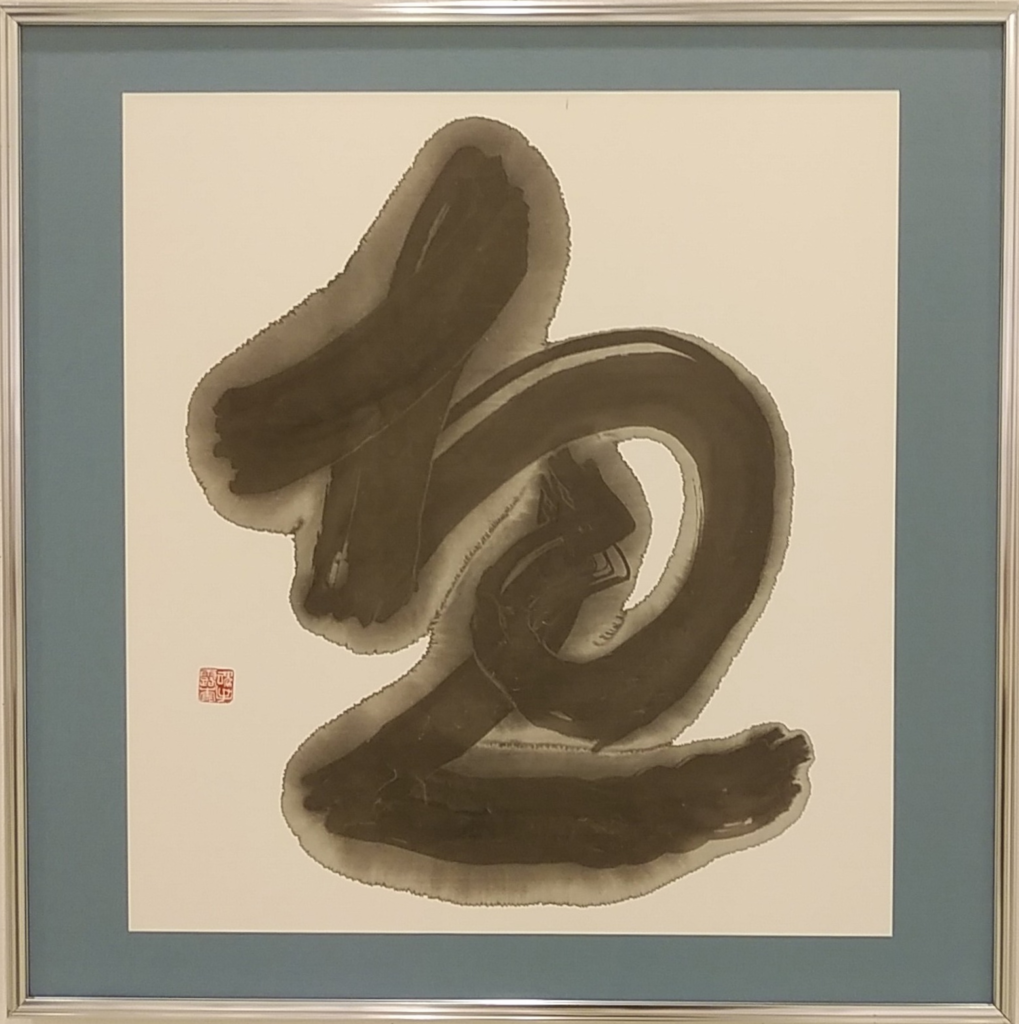
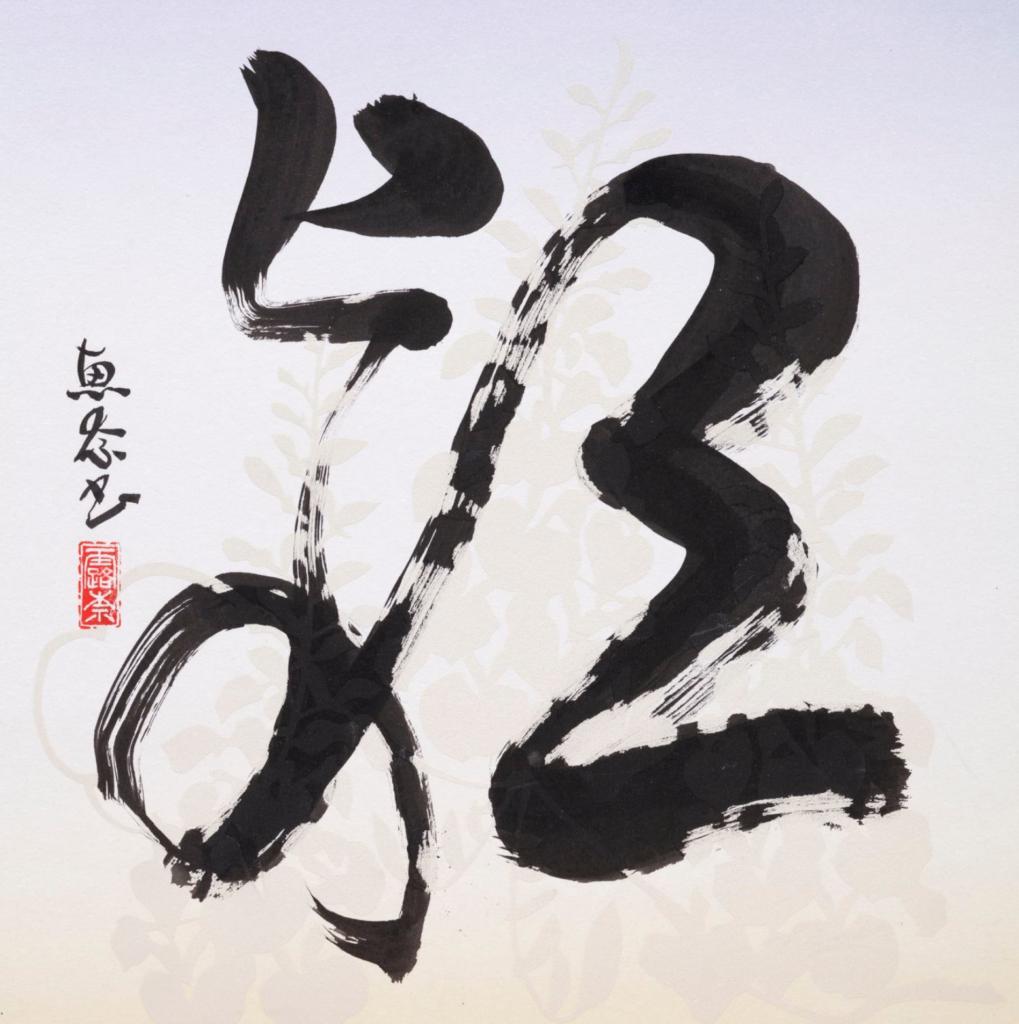
I remember working over and over on the famous haiku by 17th-century luminary Matsuo Basho:
Furu ike ya
kawazu tobikomu
mizu no oto
Old pond
A frog jumps in
The sound of water
My unlikely calligraphy cheerleader: Whitney Houston
One of the challenges was sitting in zazen, kneeling with your legs folded under your thighs. Everyone at the school did this, as did many Japanese people, even outside of calligraphy. Most calligraphers in Japan sit this way, although older people with knee problems often can’t manage it. Writing at a table while seated on a chair, which is common in Chinese calligraphy, is also an option.
Since I did not grow up sitting in zazen, it was very difficult for me at first. I would work on the Basho haiku until my legs were falling asleep. Then I would blast a Whitney Houston CD and shuffle around the room, trying my best to wake up my legs. I remember thinking I would never get out of that pond.
But eventually, I emerged—and moved on to more challenging assignments.
Marked with care in orange-red ink
Each week, all students would select their three best pieces from each category for sensei to review. She used orange-red ink to mark our work. Sometimes she wrote directly over our strokes; other times, she placed a tiny circle to show that something was correct or well done—or both. If you did a terrific job, you would earn five concentric circles. That was a rare achievement.
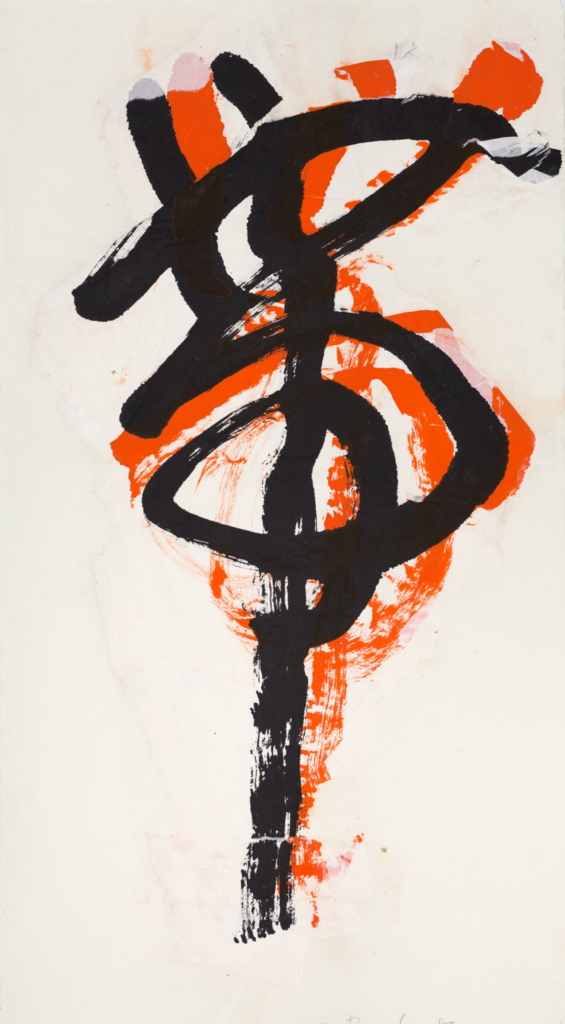
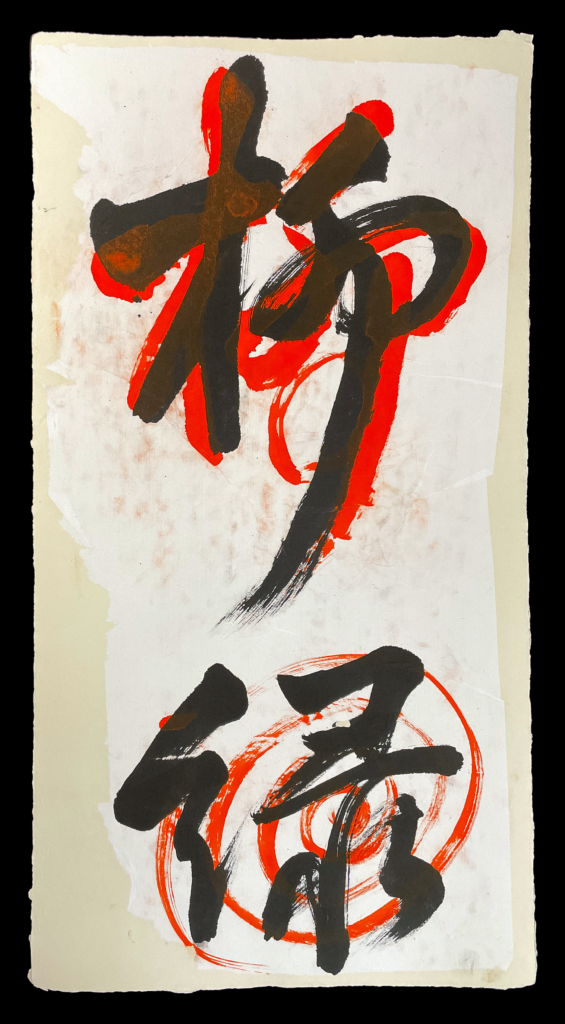
To be continued…
Now, we come to the most important question. Just what is Japanese calligraphy? Well, that is an entire realm of its own—one I will journey through in my next piece.
